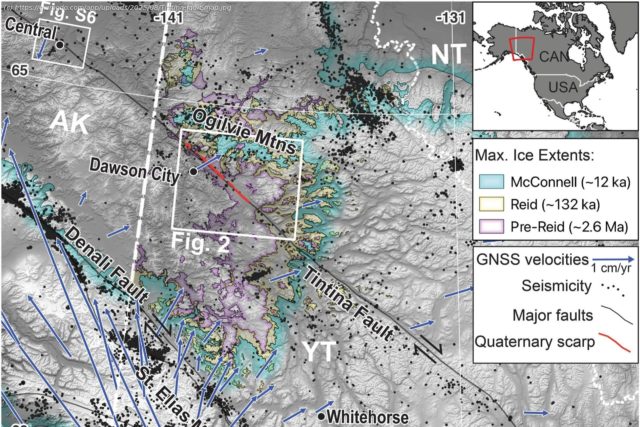The Tintina fault hasn’t produced a large earthquake in 12,000 years, but that could soon change, researchers warn.
After 12 millennia of relative inactivity, a geologic fault that stretches across the territory of Yukon, Canada, and Alaska now appears capable of producing a major earthquake, according to a new study. The findings point to an underrecognized source of seismic hazard in northwestern Canada.
Scientists previously believed that the Tintina fault, which extends roughly 620 miles (1,000 kilometers) from northeast British Columbia through the Yukon and Alaska, remained quiet for the last 40 million years. These new findings, published July 15 in the journal Geophysical Research Letters, challenge that theory. Using high-resolution topographic data, a team of researchers identified an 81-mile-long (130-kilometer-long) segment of the Tintina that produced multiple large earthquakes far more recently. The last one occurred about 12,000 years ago, and stress has been building on the fault ever since. When it ultimately ruptures, the quake could be powerful—potentially exceeding magnitude 7.5.
Such a quake would threaten small Yukon communities situated near the Tintina, particularly Dawson City, home to over 1,500 people. Severe shaking could trigger landslides and damage near highways and mining infrastructure.
Домой
United States
USA — software ‘Sleeping Giant’ Fault Under Canada Shows Major Earthquake Potential






